It doesn’t matter whether you live in a house with room for an in-ground garden or if you only want to make a portion of your yard, porch, or balcony more lovely; growing plants in containers is an excellent way to bring nature into your indoor spaces. The success and pleasure you get out of any container garden are directly proportional to how much planning and preparation you put in.
Below you will learn about Michigan container gardening, the planting zones of Michigan state, how to grow vegetables, fruits, herbs, and flowers in pots in Michigan, vegetable container gardening in Michigan, and tips for container gardening in Michigan.
USDA hardiness zones/ planting zones of Michigan
Because of the state’s continental climate, planting zones in Michigan may vary from four to six, depending on the location. Michigan is known as the “mitten state.” Despite this, much like many other states, it is divided into two separate sections. The climate in the south and the center is substantially warmer than the climate in the north, with frigid winters and scorching summers. Temperatures in the northern lower and higher peninsulas range greatly, with the upper peninsula seeing more extreme weather.
This region is characterized by relatively brief, warm summers and lengthy, severe to very cold winters regularly. The state experienced temperatures of around 66 degrees Fahrenheit during the summer, while the winter months see averages in the low 20s. The temperature of the lake water and the westerly winds that predominate in the area affect the arrival of both summer and winter, delaying them both more than would be anticipated given that the state is located roughly in the middle of the country.
Plant hardiness zones, also known as growth zones, determine the kind of plants with the best chance of thriving and surviving in a specific region. They help decide what to plant and identify the appropriate time to sow the seeds. The earliest and final frost dates are used to determine Michigan growth zones. Based on how well they can withstand cold, some plants will have different recommended planting times throughout the different zones. Michigan’s planting zones can range from 4a to 6b depending on the state but typically fall in that range.
Utilizing an Integrated Planting Zone Map, you can locate your Michigan planting zone. Keep in mind that any plant classified for a lower planting zone in Michigan than the one in which it is planted will be able to survive the winter in the zone in which it is planted. For instance, if you are planting in zone 4a, you are free to grow anything with a hardiness rating between zone 1 and zone 4. This condition is ideal for growing a wide variety of plants and vegetables.
A summer vegetable garden should include plantings of sweet corn, carrots, lettuce, green beans, and broccoli in addition to cucumbers and cucumber lettuce. In the planting zones of Michigan, plants such as the coneflower, hibiscus, hosta, and black-eyed Susan need little attention and are simple to grow. Joe Pye weed, bee balm, Butterfly weed, Michigan rose, and meadowsweet are some examples of other native plants that will flourish in gardens located in Michigan.
Michigan container gardening: How to start a container garden in Michigan?
First, choose the ideal container
Any container that can hold potting soil and allow for sufficient drainage can be used to grow plants in most situations. Examples include hanging baskets, terra cotta (clay) pots, planter boxes, whiskey barrels, 5-gallon buckets, plastic pots, concrete planters, tubs, and bushel baskets, the more conventional options. The longevity of each of these containers varies depending on the kind. When selecting a container, use your imagination.
When it comes to container gardening, choosing a container that complements the overall appearance you want to achieve is half the fun. If you don’t have any old boots, use window boxes, wine crates, tyres, or bags of potting soil. Containers that enhance drainage and feature built-in reservoirs for watering plants are the self-watering containers produced. Take the following into consideration regardless of the container you select:
The container must have a hole in the bottom to ensure proper drainage. The container must be big enough to accommodate the minimum quantity of growing material necessary for mature plant growth. The location of the container and the chosen plant will determine the kind of container used: When possible, use clear or light-colored containers outside.
In case you missed it: How to Grow Tomatoes in Michigan: Planting to Harvesting Guide
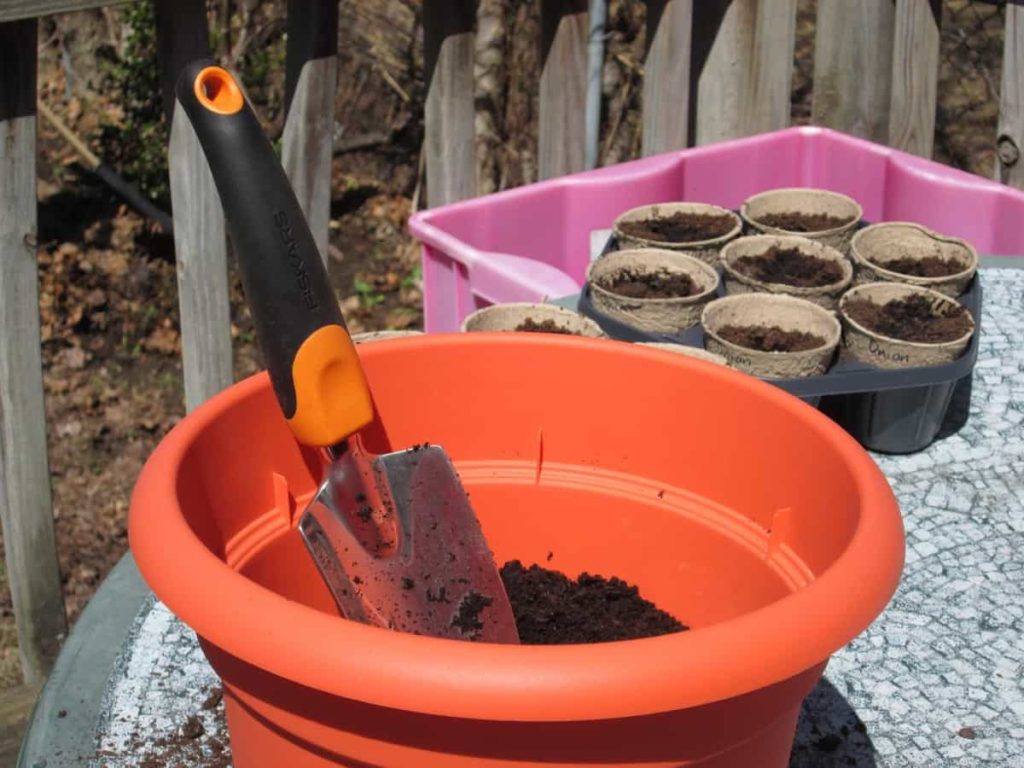
Remember that terra cotta and other porous containers can quickly cause your plants to lose water. Determine whether or not the container has to have an appealing appearance. It is important to remember to harmonize the color of the container with the plant components. Paint can be used on containers to give them a new aesthetic or produce a cooler surface and better reflect heat.
Take into account the possibility of relocating the container at a later date. If this is the case, you need to consider the weight factor. Instead of filling the container with potting mix, you may line the bottom with Styrofoam peanuts as an alternative. The modern planters made of fiberglass or Styrofoam are also lightweight and beautiful.
You have to choose a perfect potting medium
It is essential to choose a growth medium with excellent drainage but one that can also prevent plants from becoming too dry in the time between waterings. The most critical factor in effective container gardening is maintaining a wet environment with adequate pot drainage. The most effective medium for plant growth is one that does not include soil. The growing medium used in soilless gardening does not include disease-causing organisms, insect pests, or weed seeds.
They are also often light in weight and porous, enabling a mixture to be well-drained while holding onto moisture. Garden centers often have pre-mixed growth material specifically formulated for use in container gardening. However, you mustn’t rely only on peat or perlite mixtures. When left to their own devices, these media tend to grow compressed, become overly lightweight and be difficult to moisten.
You can prepare your mixture by combining peat moss, vermiculite or perlite, coarse builder’s sand, sterile potting mix, or compost (be sure the compost has been properly decomposed), and vermiculite or perlite. For an accurate estimate of the much lime required to achieve a pH between 6.0 and 6.8, submit a sample to a soil testing facility for analysis. Using a wetting ingredient in several commercially manufactured growth combinations makes them much easier to plant and water.
A “gel” that can absorb and hold 400 times its weight in water is an option for you. These polymers are safe to use and can remain stable in the environment for a considerable time before decomposing. It is important to carefully read the label to understand the quantity of polymer required for particular container size.
Over time, most potting combinations become compacted, and plants develop a condition known as root-bound. It is recommended that containers be refreshed with new material at least once every year, but no less often than once every other season. To preserve their health and vitality, plants kept in the same container for at least a year also need root trimming.
Know what to plant
Many of us have this image of a lovely classic front porch overflowing with flowering impatiens, geraniums, and the center spike! Why not grow food in your garden? Container gardening allows for the growth of a wide variety of culinary plants. Because they take up so little room and are so simple to grow, herbs grown in containers are a common and popular option. If it is veggies that you want, give greens like lettuce and spinach a go.
Growing tomatoes, zucchini, and peppers of smaller variety may also be accomplished effectively by providing a trellis or pole to climb over. It might be challenging to decide which plants to grow; thus, an excellent place to begin is with some particular gourmet pots that have been built with a certain theme in mind. You can grow your pizza toppings (basil and bell peppers as well as oregano and spinach) and salad in a garden.
Now, start planting your container garden
It’s essential to design your container garden layout before you start planting. Use broken pottery or a mesh screen to plug holes in the container where the potting mix could gather. Fill the container up to around three-quarters of its capacity. Fully saturate the potting mix with water. After it has had time to settle, add any more media that may be required. Before planting, the plants must be removed from any propagation or nursery containers they may be in.
Success can be ensured by beginning with seeds and plants in good condition, free of disease, and unaffected by pests. When planting seeds directly in a container garden according to the germination instructions, sow the seeds at the correct planting depth and in the appropriate season. The seedlings should be thinned to the appropriate spacing once they have sprouted and their first genuine leaves have emerged. This permits seedlings to develop without competing with one another and lowers the amount of root disturbance.
Be careful while watering your container garden
How can you tell when to water? Check the soil to see whether the plants are wilting since it indicates that the soil is earthy, although root-rotted plants also wilt. It’s a good idea to take a closer look at the soil or put a finger into the pots. A third way to see whether the soil is dry is to raise the pot’s rim carefully. Dry pots are less weight. Plants need less watering at the beginning of the growing season.
As the summer heats up and your plants begin to thrive, you can water your pots once or twice a day when it comes to pots; the bigger, the better since larger pots need less watering than smaller ones. The greatest results can be achieved by using commercial bagged potting mixes intended for use in pots. Ground bark, coco fiber, vermiculite, and perlite are some ingredients that make up these soilless mixtures. Container mixes need more regular watering since they are less likely to get waterlogged.
You can increase the moisture retention of commercial container mixes in various ways. Water-absorbing crystals can be added to the soil. As they absorb water, these crystals transform into a gel and gradually release it to the plant roots. Use a water-absorbing pad on the bottom of your pots. Using these mats, plant roots have access to the water they need for many days. Any container can be transformed into a self-watering container using conversion kits, or you can purchase self-watering pots.
The bottom of these pots has a reservoir for storing water, which helps keep the soil wet. Hands-free watering is possible with container drip watering systems. Microtubing systems with timers and standard water delivery methods should be used. Another option is to embed a water-filled container in the ground, such as a bottle.
As required, water flows or drops into the soil. Many gardeners use watering cans or hoses with watering wands to water pots. To maximize your investment, get a wand with replaceable parts. You’ll save money in the long run since you won’t have to replace the wand yearly but simply the nozzle or shut-off valve.
Fertilizing your container garden
Soilless mixtures explicitly designed for container planting do not include any fertilizers. To remedy this situation, you’ll need to supplement the garden soil with trace nutrients that plants would normally be able to receive. Fertilizers are slow-release and may provide a container garden with all the necessary nutrients. Nitrogen is slowly supplied to plant roots using a slow-release fertilizer, which ensures that plant roots get the essential nutrients during the whole growth season without scorching.
As fertilizers are salts, using too much of them may cause damage or even cause plants to die. Over time, these salts can accumulate in potting soil and permeable containers like terra cotta. To eliminate salt accumulation from past harvests, use a 10% bleach solution to wash permeable pots before planting. A water-soluble fertilizer can be used as a supplement if further fertilizing is required. Always read and follow the recommendations on the fertilizer packaging, and maintain a record of when you planted seeds and applied fertilizer.
Best vegetables to grow in containers in Michigan
It is possible to grow a wide variety of vegetables in containers in Michigan. Cucumbers, turnips, asparagus, summer and winter squash, beans, peppers, carrots, onions, radishes, tomatoes, potatoes, and cabbage. Some of the details are given below:
Tomatoes: You may not be surprised to learn that tomatoes are great container plants. Tomatoes can be grown in containers of any size as long as the pot is large enough, although some thrive better in tiny areas than others. To ensure that your plants receive the nutrients they need to grow, you’ll need to use a high-quality fertilizer and follow a feeding schedule.
In case you missed it: How To Grow Tomatoes At Home – A Full Guide
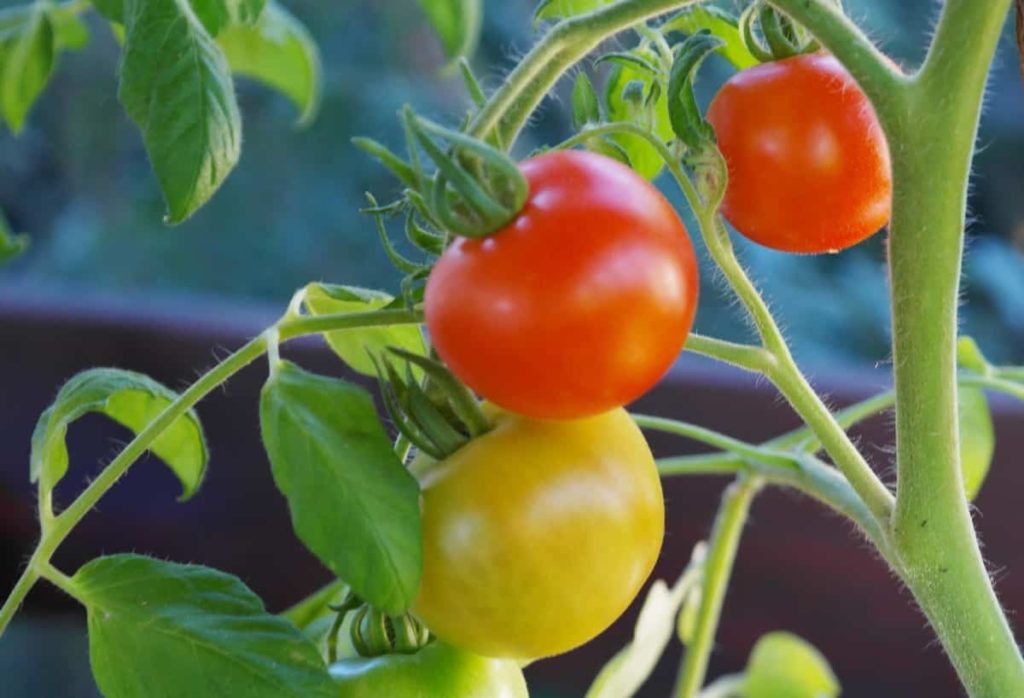
Salad greens: In terms of container gardening, salad greens are one of the most simple crops to raise. Some gardeners prefer to start their lettuce seeds inside, but you can put them in your pot, position them in a sunny location, provide consistent moisture, and watch your lettuce sprout quickly. If you’re growing lettuce, follow the instructions on the seed packaging for how to sow it. On the other hand, baby greens are so simple to grow that even young children may enjoy planting and caring for them.
Peppers: When the circumstances are perfect, sweet and spicy peppers may grow in containers. Make sure the soil is rich, and the pot is placed in an area with a lot of sunlight. To ensure a juicy harvest in summer, it is essential to keep them watered throughout the growing season. Ornamental varieties are also available for an added splash of color in your environment.
In case you missed it: Growing Hydroponic Peppers for Dummies
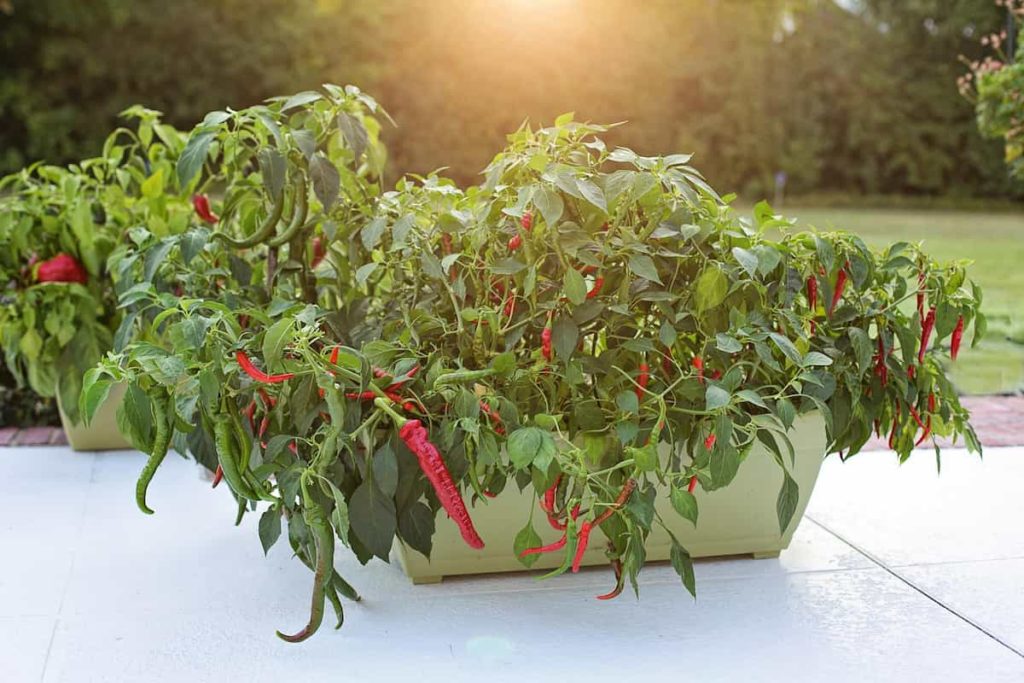
Bush beans: Bush beans can thrive in tiny planters and containers on balconies, courtyards, and front porches, whereas vine beans demand more time and room. Most bean plants should be spaced 6 to 8 inches apart to grow, so be sure to measure your pots before scattering the seeds.
Cucumbers: Ensure your containers can hold a reasonable quantity of soil moisture since they require a lot of water to thrive. As with beans, you’ll want to choose a shrub kind of cucumber if growing it in a container is something you’re interested in.
Best fruits to grow in containers in Michigan
In Michigan, you could choose to plant a variety of fruit trees, including apples, pears, peaches, plums, or cherries, as one of your choices. Strawberries, raspberries, blackberries, blueberries, and grapes are examples of little fruits that can be enjoyed.
Apples: Apple trees make excellent patio specimens. Graft your favorite apple tree kinds onto the correct rootstock to get the best resultrootstock. Because many well-known apple fruit tree kinds cannot generate viable offspring from their seeds, new trees must be created by grafting the branches of these varieties onto the solid rootstock of another apple species. Apple trees that have been grafted onto dwarf rootstocks provide the finest fruit when grown in pots.
Peaches and apricots: Container-grown peach and apricot trees are becoming more popular, and for a good reason. In only 1-2 years after seeding, they provide fruit that is both fast and visually appealing. Growing an apricot or peach patio tree in a pot allows you to move it inside if a late frost is predicted.
Cherries: Cherry trees, which are also a part of the rose family and can be grown successfully in pots, are cultivated for the fruit they produce and the stunning spring blooms they produce. Sweet and sour cherry trees are the two most common varieties. The most common kind of cherries you’ll encounter at a supermarket are sweet cherries. Trees that produce sour cherries are less picky about their growing conditions and may tolerate more shade.
Strawberries: Growing in a limited soil, your fruit tree will rapidly run out of nutrients and need more nutrition dosages to keep it going. Regularly apply a slow-release fertilizer to the tree’s roots to provide a steady supply of essential nutrients. Don’t over-fertilize your plants by reading the instructions on your fertilizer box.
In case you missed it: Growing Strawberries In Greenhouse – Polyhouse
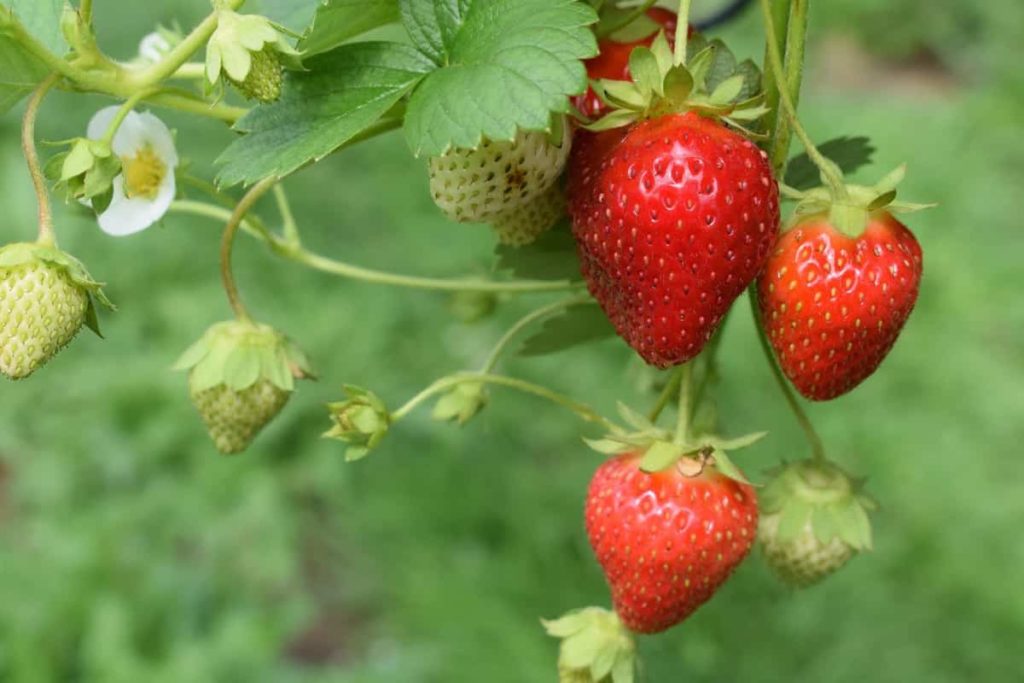
Blueberries: Blueberries thrive in acidic soil since they are ericaceous plants. It’s possible to provide them with the conditions they need by growing them in containers. All blueberry plants need a lot of sunlight and water. They do not, however, like to be fed frequently. In the summer, only one or two doses of organic fertilizer will provide their nutritional requirements for the entire year.
Best flowers to grow in containers in Michigan
Some flowers that can be grown successfully in Michigan are Cosmos, Geraniums, Impatiens, Marigold, Lantana, Nasturtium, Pansy, and Petunia. Some of the details are given below.
Zinnias: One of the most popular garden plants is the Zinnia. To stimulate bushier growth on these flowers, which bloom from June until the first frost, pinch back the new foliage as it appears. Option sizes range from four inches to nearly six feet. New blooms are encouraged by deadheading these flowers.
Geraniums: Pelargonium is the common name for our geraniums in Michigan. These flowers bloom in stunning clusters and do well in direct sunlight and light shade. Despite their annual status in milder regions, geraniums can thrive in zones five on the USDA hardiness chart.
Marigolds: Annual marigolds are simple to grow and may be used to keep mosquitoes at bay if you can handle their pungent aroma. A sunny location is recommended for the cultivation of marigolds, which thrive in USDA plant hardiness zones 5-10.
In case you missed it: Growing Marigolds in Pots from Seed, Cuttings, Layering
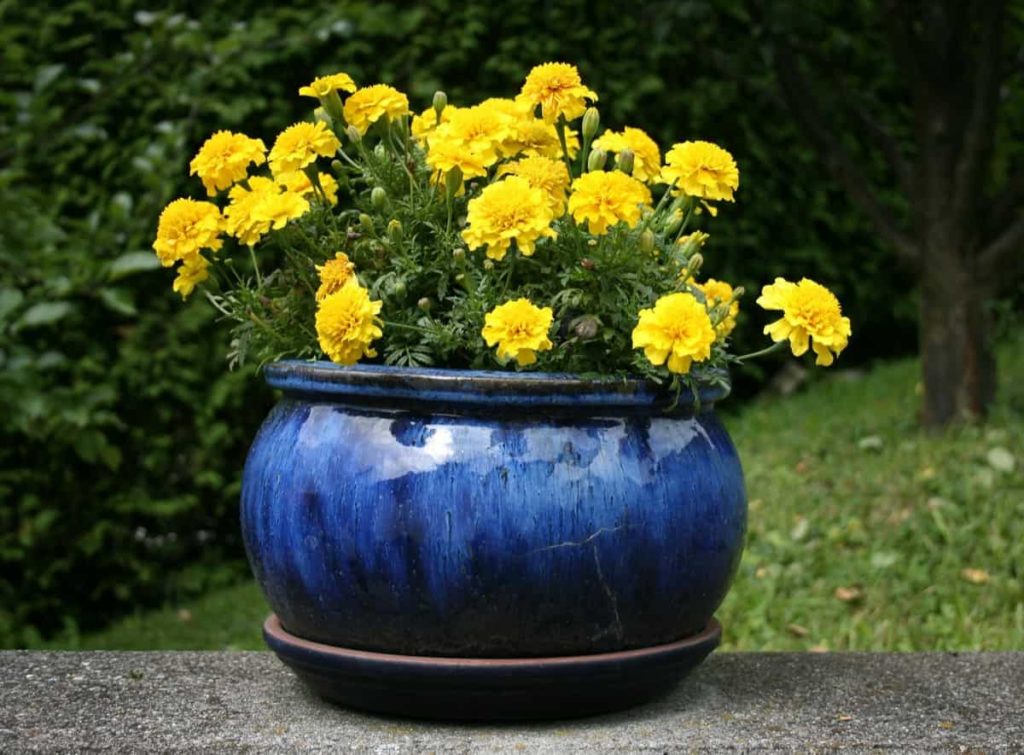
Impatients: Shaded gardens are the best place to cultivate these easy-to-grow flowers. If you’re looking to brighten up a shady space, impatiens are your best bet. Zones 1-11 are suitable for growing these multipurpose flowers.
Black-eyed Susans: They feature a daisy-like black head with yellow petals, giving them a striking appearance. Depending on the kind, they may grow fairly large and thrive in full sunlight. They can thrive in any Michigan garden since they can grow in zones 4 through 9.
Best herbs to grow in containers in Michigan
Many herbs can be grown in Michigan, such as basil, thyme, rosemary, parsley, cilantro, lavender, and oregano. Some of the details are given below.
Basil: For soups and sauces, basil is a terrific ingredient to have on hand. To preserve taste, add it at the end of the cooking process. Maintain a wet soil throughout the growth process, and give the plant its last drink the night before harvest. Take care of any flower spikes that may grow. If you pick basil often, it will keep on growing.
Cilantro: You’ll find it in Mexican and Asian cuisine when it comes to cilantro. For best results, use a small amount and add more as needed. When ready to harvest, take a pair of clean, sharp scissors and cut the plant about a third. Foliage formation on this particular plant will not cease. For ongoing development, harvest once a week.
Mint: It is often used in sweets, drinks, and jellies, while peppermint is utilized more for its powerful aromas. If you want a huge quantity, clip the plant just before it blooms, leaving approximately an inch of it attached to the container. Harvesting individual leaves are flexible and can be done at any time of day or night.
In case you missed it: Growing Mint Indoors – A Full Planting Guide

Oregano: Soups, stews, and sauces often use oregano, most commonly associated with Italian and Greek cuisine. Pick out individual leaves or a tall stem with leaves attached. Ensure that the plant has grown at least 4 inches in length before harvesting. Trimming the plant regularly encourages it to grow.
Rosemary: Rosemary’s taste is sweet and resinous, making it ideal for chicken, lamb, and soups. Trim the stems, remove the leaves by hand, or use the stems as skewers. Removed branches must be re-attached to the primary or secondary branch.
- How to Grow Tomatoes Organically at Home: A Comprehensive Guide
- Organic Gardening on a Budget: Low-Cost Methods and Materials
- Gongura Seed Germination and Planting Methods
- Cabbage Seed Germination and Selection
- Broccoli Seed Germination and Selection
- Asparagus Seed Germination and Variety Selection
- Seasonal Flower Gardening: Best Practices for Spring, Summer, Fall, and Winter
- How to Grow Hibiscus from Flower
- Plantation Ideas for Home Decoration: A Beginners Guide
- Flower Garden Designs and Layouts for Beginners
- Planting and Spacing Techniques in Papaya: A Beginner’s Guide
- Growing Gold: Essential Techniques for Planting Pineapples
- How to Make Kalanchoe Plant Bushy: Home Remedies and Solutions
- 11 Reasons Why Your Gardenia is Not Blooming: Home Remedies and Solutions
- Eco Elegance: The Guide to Designing a Drought-Tolerant Landscape
- Gardening on a Slope: Strategies for Hillside Landscaping
- Nourish and Flourish: Top Organic Mulches for Thriving House Plants
- Everything You Want to Know about Indian Mogra Flower: Discover Uses and Growing
- Green Thumb Success: Expert Tips for Cultivating Greenhouse Pumpkins All Year Round
- Maximize Growth & Flavor: The Ultimate Guide to Companion Planting in Herb Gardens
- How to Control Rhododendron Problems Naturally: Home Remedies and Organic Ways to Fix Them
- Natural Magic: The Remarkable Benefits of Cinnamon for Plants
- Best Steps to Revive Dying Tulip with Natural and Organic Treatment
- 10 Reasons Why Your Angel Trumpet is Not Blooming: Remedies and Treatment
- How to Fix Periwinkle Leaf and Flower-Related Problems: Natural Remedies and Solutions
- How to Fix Zinnias Leaf and Flower Problems: Discover Natural and Home Remedies
- Organic Steps to Induce Lemon Tree Flowers: A Comprehensive Guide
- Bloom Booster: Crafting the Perfect Homemade Bougainvillea Fertilizer
- Optimizing Growth: A Guide to Applying NPK Fertilizer for Potted Plants
- 10 Best Homemade Fertilizers for Rubber Plant: DIY Recipes and Application Method
- How to Boost Female Pumpkin Flowers: Effective Steps for More Flowers and High Yields
- Transform Your Indoor Garden: Top Benefits of Pink Salt for Houseplants
- 10 Best Homemade Fertilizers for Peacock Plants (Calathea): Easy DIY Guide
- Unlock Blooms: 9 Reasons Why Your Potted Chrysanthemum is Not Blooming
- 8 Reasons Why Your Potted Hibiscus is Not Blooming: Fix it with Simple Solutions
- Unlock Blooms: 9 Key Reasons Your Potted Frangipani Won’t Flower
Naturally resourcefully, 🍓🍉